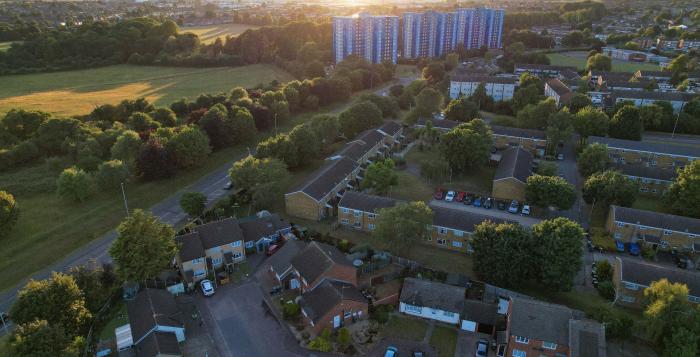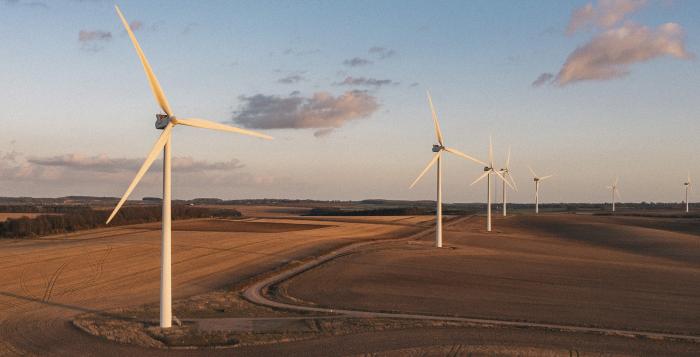A Holistic Network Design for Offshore Wind
The Holistic Network Design (HND) is a first of its kind, integrated approach for connecting 23GW of offshore wind to Great Britain.
By considering future offshore generation out to 2030, infrastructure can be planned to bring power to the grid cohesively, ensuring maximum benefit for consumers, local communities and the environment.
The HND provides a recommended offshore and onshore design for a 2030 electricity network, that facilitates the Government’s ambition for 50GW of offshore wind by 2030.
The HND enables investment and delivery of infrastructure, including locations in North and South Wales, the Scottish Islands and West Coast, and the East Coast of Scotland and Aberdeenshire, Lancashire, North-East England, and Yorkshire & Humber, opening the door for more jobs and economic growth in these regions.
The recommended design in the HND has equally considered four different objectives to make sure the most appropriate approach is taken forwards, including:
- Cost to consumer
- Deliverability and operability
- Impact on environment
- Impact on local communities
Developed in consultation with the UK, Scottish and Welsh Governments, Ofgem, Transmission Owners, offshore wind developers and environmental stakeholders, the HND primarily includes offshore wind projects that secured seabed leases through The Crown Estate’s Offshore Wind Leasing Round 4 and Crown Estate Scotland’s ScotWind Leasing Round. It also assumes 1GW of floating wind from the upcoming Celtic Sea leasing round and some additional projects that are due to connect at a similar place and time to others in scope.

Pathway to 2030 Holistic Network Design summary report
This July 2022 summary report outlines our key messages from the more detailed reports, which set out our recommended single, integrated network design. Our proposed design enables the connection of 23GW of offshore wind.

The Holistic Network Design Report
This July 2022 report gives more detail on our recommended approach for connecting the in scope offshore wind farms, including the needs associated with the offshore transmission network and the onshore transmission network.
We have formed a Celtic Sea Subgroup as part of the Central Design Group (CDG) governance for the Holistic Network Design Follow Up Exercise. This group is designed to be a forum to share information related to the HNDFUE in the Celtic Sea and to advise and consult on design options. Members of the subgroup include:
- NESO (Chair)
- The Crown Estate
- National Grid Electricity Transmission
- Renewable UK
- Celtic Sea Developer Alliance
- Ofgem
- Department for Energy Security and Net Zero
- Natural England
- Natural Resources Wales
- The Wildlife Trust
- Marine Management Organisation
- Joint Nature Conservation Committee
We have developer representation on the subgroup, rather than specific developers, to ensure that developer feedback is taken into consideration fairly and objectively. The feedback provided by subgroup members will be collated and summarised where appropriate to be included in the final documentation submitted to the Offshore Transmission Network Review (OTNR) on completion of the HNDFUE.
Currently offshore wind developers can build point to point connections directly to the transmission system. This approach was designed to incentivise investment into what was a relatively new and innovative technology.
As more and more wind farms are being built, this approach is no longer fit for purpose because this isn’t the most efficient way of doing things.
The HND has been created to provide a coordinated and integrated approach for the connection and transporting of significant volumes of offshore wind - providing more benefits to consumers, local communities, and the environment.
Early Opportunities is a workstream within the OTNR. It supports wind farms that are further along in their development than those included in the HND.
This workstream encourages developers of offshore wind and interconnector projects to explore opportunities to coordinate their connections.
Projects in scope are primarily based off the coast of East Anglia, have confirmed network connection agreements in place and are more advanced in their development than those in the Pathway to 2030 workstream.
Early Opportunities aims to reduce the impact of network infrastructure on communities and the environment without disrupting ongoing development, which could increase costs and put the ambition for 50GW of offshore wind by 2030 at risk.
Alongside the publication of the Pathway to 2030 Holistic Network Design, several other announcements have been made, committing to explore further opportunities for coordination.
BEIS has announced four initial pathfinder projects. These are well-advanced projects that are leading the way in utilising the regulatory and policy changes being developed through the OTNR, to increase transmission network coordination and deliver the OTNR’s objectives.
Renewable UK has been playing a facilitative role in this workstream, engaging with the relevant developers and seeking options to take coordination opportunities forward, and identify additional pathfinder projects. The projects engaging with RenewableUK have published an update on the progress of this work alongside the HND
National Grid Electricity Transmission (Sea Link), National Grid Ventures (Nautilus and EuroLink), North Falls (offshore wind farm) and Five Estuaries (offshore wind farm) are working together and exploring the potential for greater coordination between their projects, with a view to identifying a future Pathfinder Project.
We’ve worked with multiple organisations and stakeholder groups through our role within the OTNR and in developing the HND, including:
- UK, Welsh and Scottish Governments
- Ofgem
- The Crown Estate and Crown Estate Scotland
- National Grid Electricity Transmission, Scottish and Southern Electricity Networks Transmission, SP Transmission
- The Marine Management Organisation, Natural England and other environmental stakeholders
- Offshore wind developers
The information set out in the HND will be used to inform the development of the Detailed Network Design (DND), which will be taken forward by the organisation responsible for developing and building that part of the network. It is this stage of the process where specific technologies and cable route corridors are chosen by the party responsible for delivering each asset. Statutory consultations and relevant environmental assessments will also take place at this point.
We are also developing a HND follow-up process which will include the remaining ScotWind leaseholders, any capacity available through the ScotWind clearing process and 4GW of Celtic Sea capacity. More detail on the follow-up exercise will be communicated this summer.
While the HND is a significant step towards achieving the ambition for 50GW of offshore wind by 2030, it is critical that other commitments made in the Government’s British Energy Security Strategy are delivered. This includes reducing the time taken to build onshore transmission networks and making the consenting and regulatory approvals processes more efficient.
Who to contact
If you have any questions or would like to find out more, you can contact the team on [email protected]
Find out more
Beyond 2030
The Beyond 2030 report builds on top of the Holistic Network Design and makes a set of network recommendations throughout the 2030s.
NOA Refresh
Learn more about the wider onshore network requirements needed to achieve the 2030 ambition.
Offshore Coordination Project
Find out more about the offshore coordination project.
Related documents
| Name | Published Sort ascending |
|---|---|
| North Cluster Impact Assessment outcome summary | 23 May 2024 |
| Pathway 2030 – FAQs | 19 Aug 2022 |
| Pathway 2030 - The Industry Code, Standard and Licence Recommendation Report | 17 Aug 2022 |
| Pathway 2030 – Summary Report - printable version | 29 Jul 2022 |
| Appendices: 1 Comprehensive List of Onshore and Offshore Network | 8 Jul 2022 |
| NOA refresh 2021-22 | 6 Jul 2022 |
| Pathway 2030 - Holistic Network Design | 5 Jul 2022 |
| Pathway 2030 - The Stakeholder Approach, Engagement and Feedback Report | 5 Jul 2022 |
| Pathway 2030 – summary report | 5 Jul 2022 |
| Glossary – For Pathway 2030 and NOA 2021-22 Refresh | 5 Jul 2022 |



